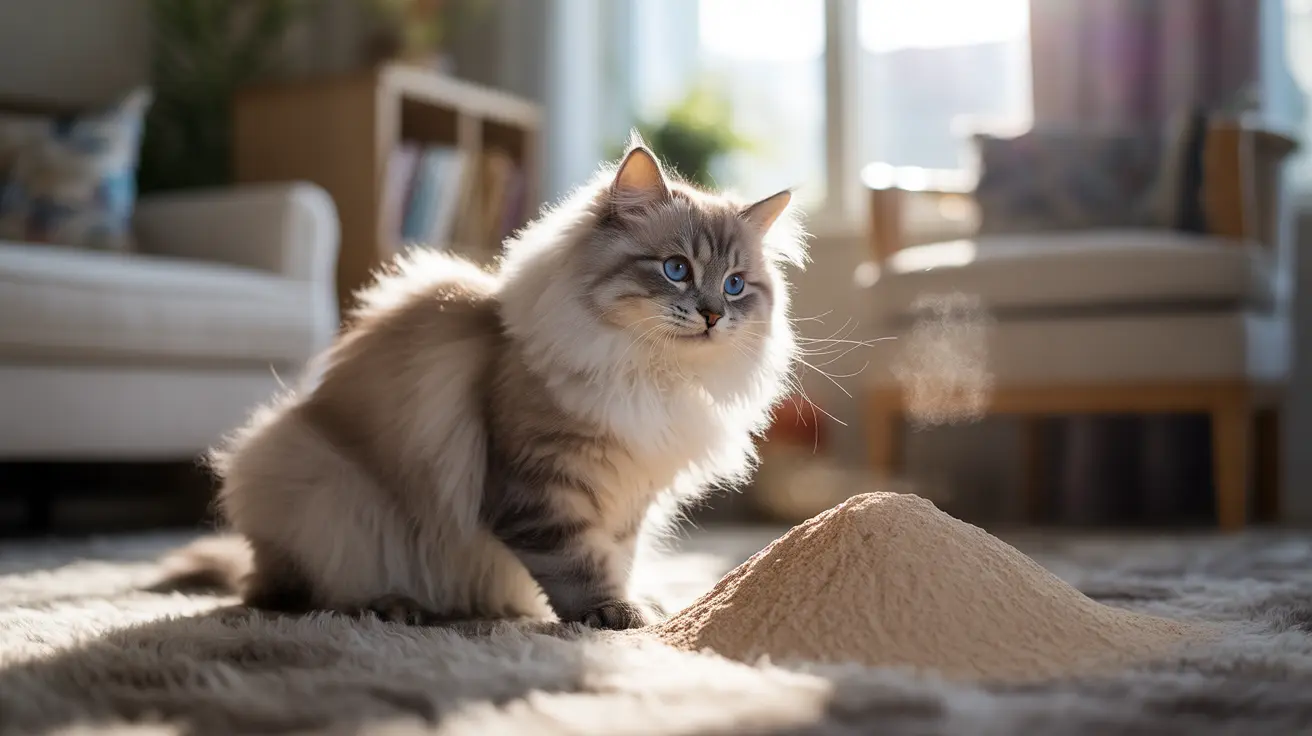Understanding Diatomaceous Earth and Its Role in Pet Care
For cat owners seeking natural flea control solutions, diatomaceous earth (DE) often emerges as a potential option. This naturally occurring powder, derived from fossilized diatoms, has gained attention for its pest-control properties. However, before incorporating DE into your cat's flea management routine, it's crucial to understand both its benefits and limitations.
While diatomaceous earth can be an effective tool against adult fleas, its safe use requires careful consideration and proper application techniques. This comprehensive guide will explore the safety aspects, proper usage methods, and important precautions when using DE around cats.
What Makes Food-Grade Diatomaceous Earth Safe for Cats?
Food-grade diatomaceous earth is generally considered safe for external use on cats when applied correctly. Unlike pool-grade or filter-grade DE, food-grade varieties contain no harmful chemical treatments and maintain a specific particle size that's safer for pet applications.
The key safety factor lies in proper application and understanding that while DE is natural, it's not completely risk-free. Its microscopic particles work by physically damaging flea exoskeletons rather than through chemical action, making it a more natural choice for pest control.
Proper Application Methods to Ensure Cat Safety
When using diatomaceous earth around cats, proper application is crucial for both effectiveness and safety. Here are the essential steps:
- Apply only a thin layer to avoid excess dust
- Keep DE away from your cat's face, especially eyes and nose
- Focus on treating the environment rather than direct application to your cat
- Ensure proper ventilation during application
- Remove or cover food and water bowls during treatment
Potential Risks and Safety Precautions
While diatomaceous earth is generally safe, there are several important considerations:
The primary concern is respiratory safety. Cats have sensitive respiratory systems, and inhaling DE dust can cause irritation or more serious issues. This is especially important for cats with pre-existing respiratory conditions.
Additional precautions include:
- Using only food-grade DE
- Avoiding application in enclosed spaces
- Monitoring your cat for any adverse reactions
- Keeping treated areas well-ventilated
- Regular cleaning to prevent dust accumulation
Effectiveness as a Flea Control Method
Diatomaceous earth can be effective against adult fleas, but it's important to understand its limitations. While DE can kill adult fleas within 24-48 hours of contact, it doesn't affect eggs or larvae, making it just one part of a comprehensive flea control strategy.
For optimal results, combine DE use with:
- Regular vacuuming and cleaning
- Treatment of all pet bedding and resting areas
- Consistent monitoring of flea activity
- Additional flea control methods as recommended by your veterinarian
Frequently Asked Questions
Is food-grade diatomaceous earth safe for cats to use for flea control?
Yes, food-grade diatomaceous earth is generally safe for cats when used properly and with appropriate precautions. However, it should only be used externally and with careful attention to prevent respiratory exposure.
How should I apply diatomaceous earth on my cat to avoid respiratory and skin irritation?
Apply a thin layer avoiding the face, eyes, and nose. It's often better to treat the environment rather than applying directly to your cat. Ensure good ventilation and monitor for any signs of irritation.
Can diatomaceous earth kill all flea life stages on cats and in the home?
No, diatomaceous earth only effectively kills adult fleas. It does not affect eggs, larvae, or pupae, which make up about 95% of a flea infestation.
What precautions should I take when using diatomaceous earth around cats with respiratory issues?
Cats with respiratory issues should have minimal to no exposure to DE. Consider alternative flea control methods or consult your veterinarian for specific recommendations.
How effective is diatomaceous earth compared to conventional flea treatments for cats?
While DE can help control adult fleas, it's generally less effective than conventional flea treatments. It works best as part of an integrated pest management approach rather than a standalone solution.
Conclusion
When used properly, diatomaceous earth can be a safe, natural component of your cat's flea control routine. However, it's essential to prioritize safety precautions, use only food-grade products, and understand its limitations. For comprehensive flea control, consider DE as part of a broader strategy that includes regular cleaning and veterinary-approved flea prevention methods.






